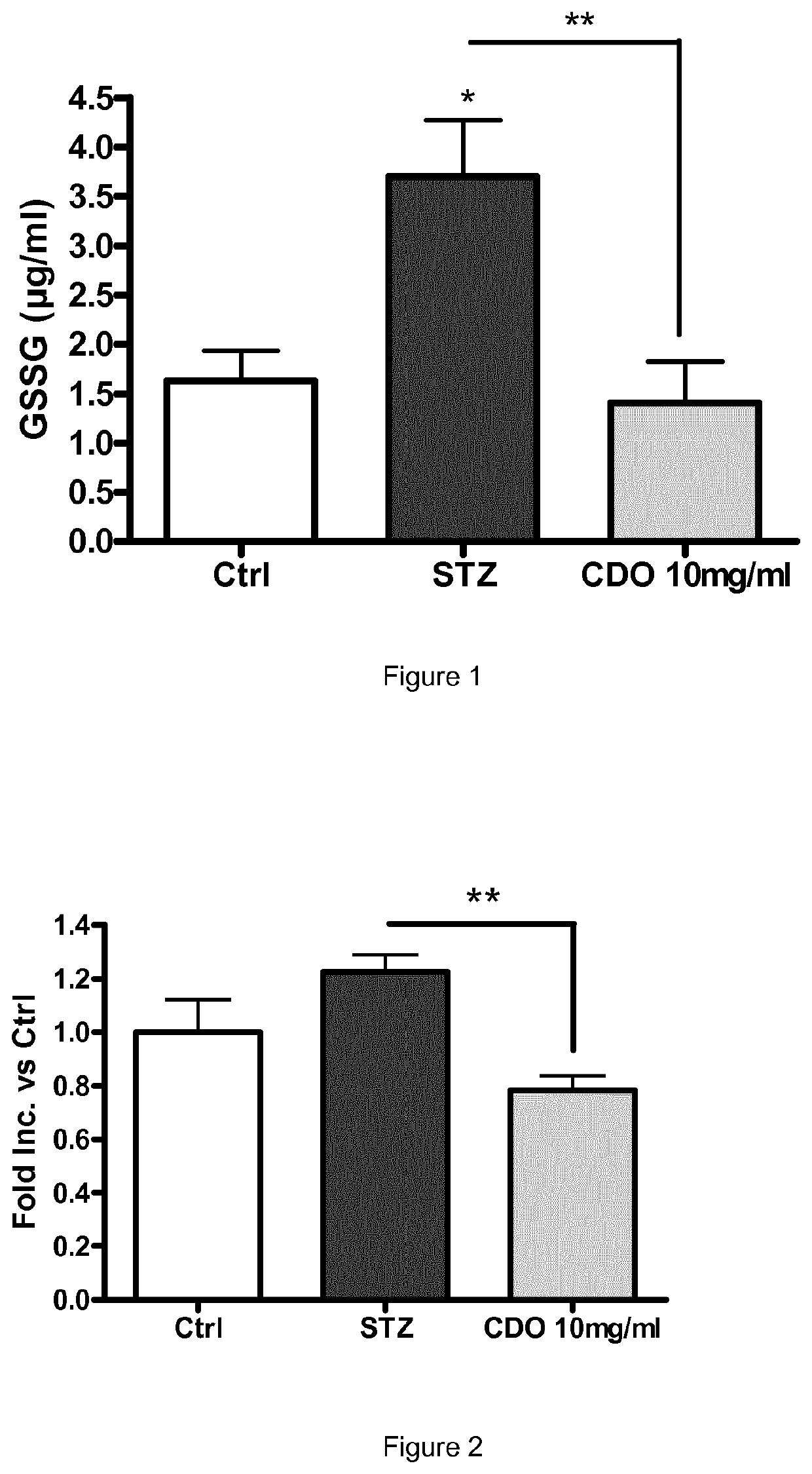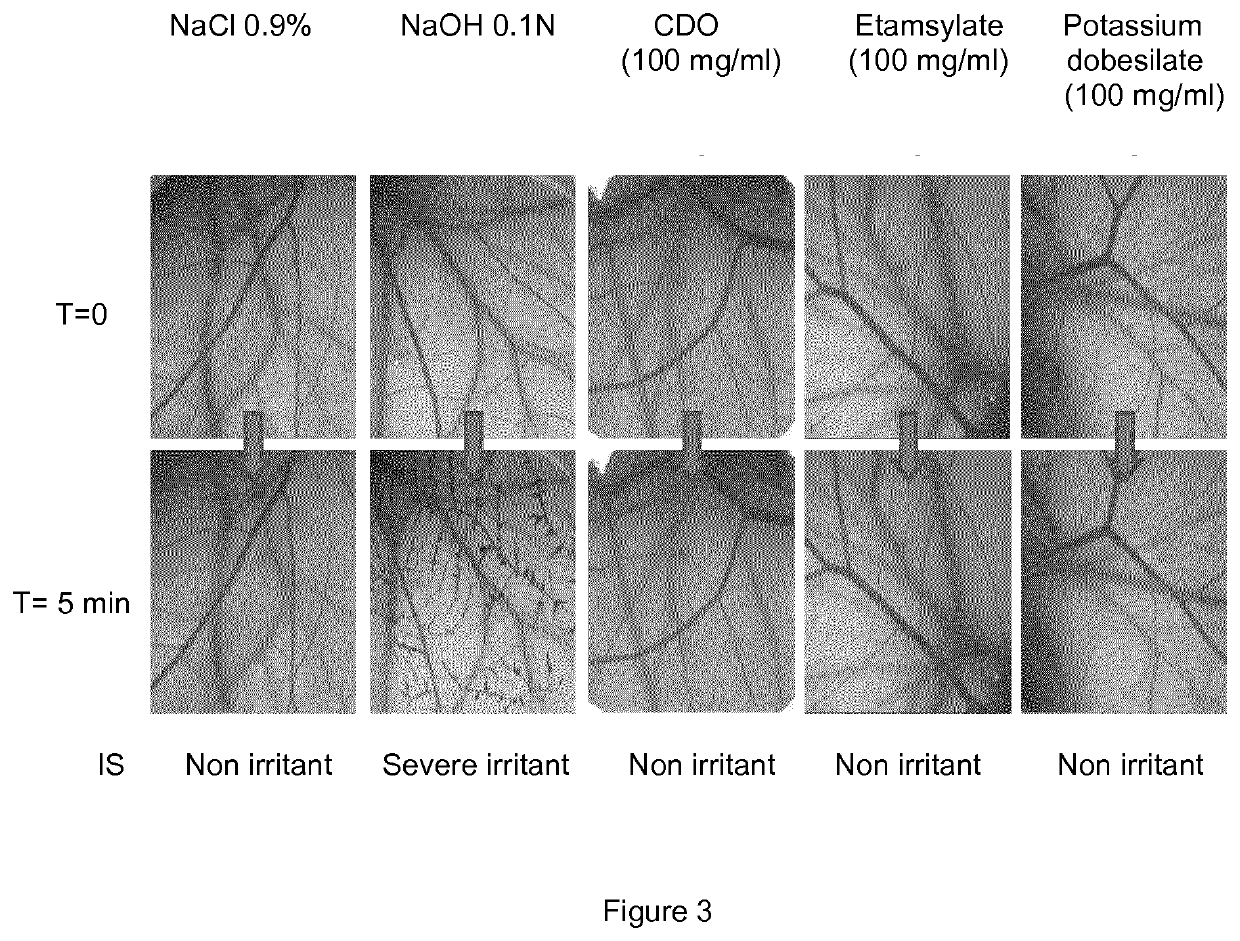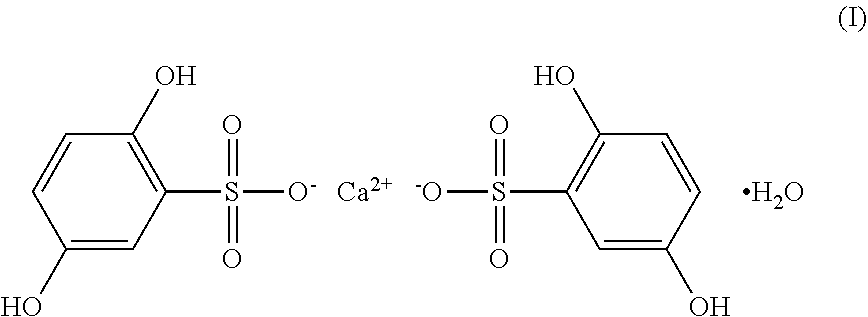Ophthalmic topical composition comprising dobesilic acid for treating diseases of the posterior segment of the eye
- Summary
- Abstract
- Description
- Claims
- Application Information
AI Technical Summary
Benefits of technology
Problems solved by technology
Method used
Image
Examples
example 1
ons
[0132]Weigh the appropriate amount of CDO or etamsylate in a suitable vessel and add the distilled water referred in Table 1.
[0133]Dissolve the CDO or etamsylate in water with mild agitation.
TABLE 1Composition1234567Calcium dobesilate0.5 g1.0 g2.0 g7.5 g10.0 g. . .. . .monohydrateEtamsylate—————1.26 g12.6 gDistilledq.s.q.s.q.s.q.s.q.s.q.s.q.s.water100 ml100 ml100 ml100 ml100 ml100 ml100 mlq.s. quantity sufficient for
example 2
stribution of CDO (Topical Ocular Vs. Oral Single Dose Administrations) in Rats and Rabbits
[0134]Methods
[0135]Ocular distribution of CDO was determined in rat and rabbit animal models in order to compare bioavailability after oral administration and eye instillation.
[0136]Ocular Distribution of CDO in Rats (Topical Ocular Vs. Oral Administrations)
[0137]In Sprague Dawley (SD) rat, weighing approximately 200 g, CDO was administered by topical ocular instillation (10 μl / eye) at 10 mg / ml (composition 2 of Example 1), at 100 mg / ml (composition 5 of Example 1) or by oral gavage at 50 mg / kg, at 200 mg / kg or at 750 mg / kg in aqueous solution (from compositions 1, 3 and 4, respectively, of Example 1). At 15, 60, 180 and 360 minutes post-administration, animals were euthanized and plasma and ocular tissues including sclera, cornea, retina, vitreous humour / lens and optic nerve were collected.
[0138]Oral dose of 50 mg / kg (10 mg) in rat was equivalent in human to one 500 mg capsule Doxium®, 200 mg...
example 3
stribution of Etamsylate Following Topical Ocular Single Dose Administrations in Rats
[0161]Methods
[0162]Ocular distribution of etamsylate was determined in rat in order to confirm the absorption of the drug into the posterior segment of the eye.
[0163]In Sprague Dawley (SD) rat, weighing approximately 200 g, etamsylate was administered by topical ocular instillation (10 μl / eye) compositions 6 and 7 of Example 1. At 15, 60 and 180 minutes post-administration, animals were euthanized and ocular tissues including retina, and optic nerve were collected.
[0164]Analytical Conditions
[0165]As described in Example 2.
[0166]Results
[0167]Next table 4 shows the experimental results:
TABLE 4CDO μg / g tissueTopical eye administration single doseTime(10 μl / eye)Tissue(h)12.6 mg / ml = 0.126 mg126 mg / ml = 1.26 mgRetina0.254.394.0513.482.4230.271.56Optic0.2536.4625.17nerve18.1315.7932.322.67
[0168]The absorption of another dobesilic acid salt (etamsylate) is confirmed. The active ingredient reaches the poste...
PUM
 Login to View More
Login to View More Abstract
Description
Claims
Application Information
 Login to View More
Login to View More - R&D
- Intellectual Property
- Life Sciences
- Materials
- Tech Scout
- Unparalleled Data Quality
- Higher Quality Content
- 60% Fewer Hallucinations
Browse by: Latest US Patents, China's latest patents, Technical Efficacy Thesaurus, Application Domain, Technology Topic, Popular Technical Reports.
© 2025 PatSnap. All rights reserved.Legal|Privacy policy|Modern Slavery Act Transparency Statement|Sitemap|About US| Contact US: help@patsnap.com



